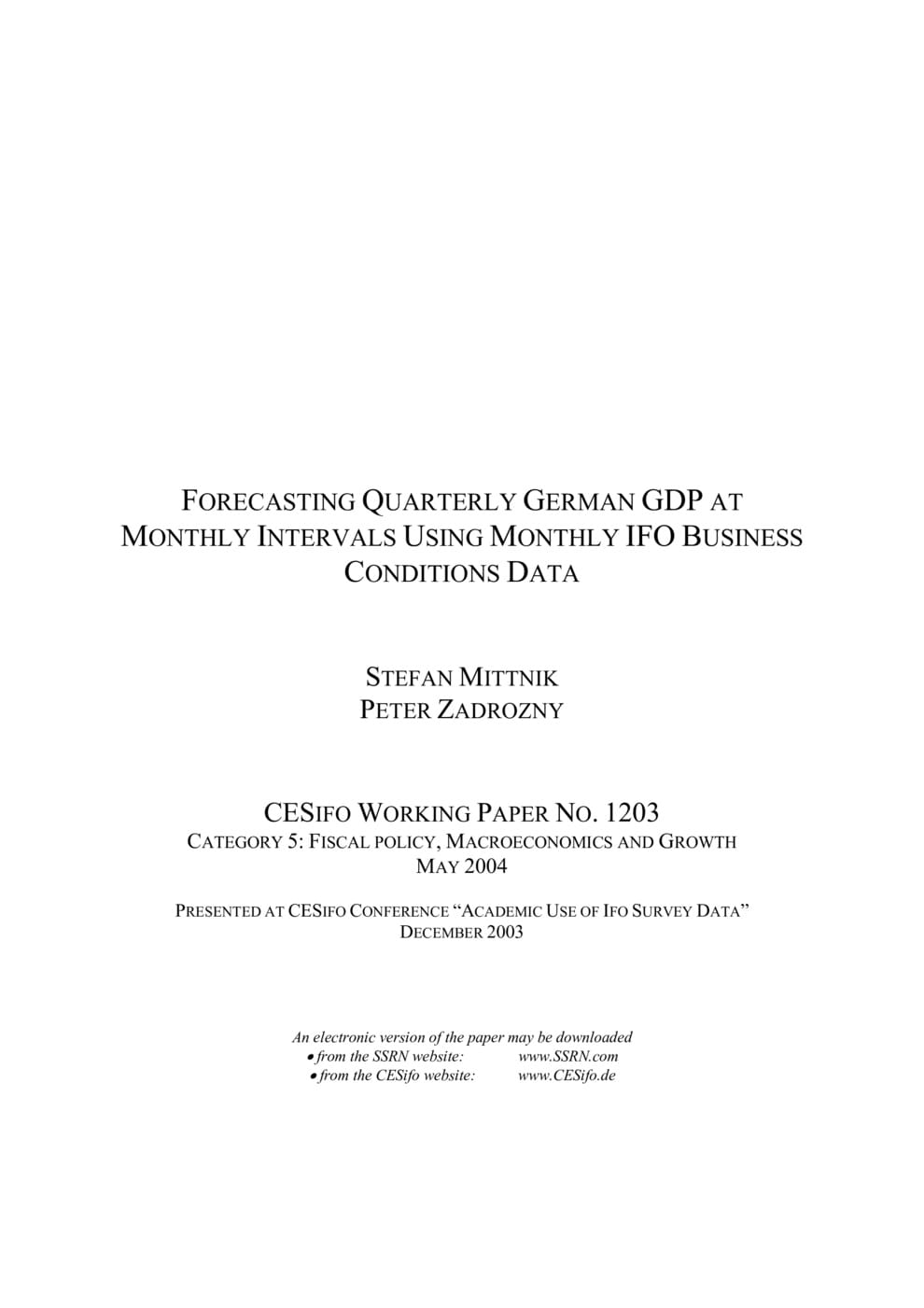Forecasting Quarterly German GDP at Monthly Intervals Using Monthly IFO Business Conditions Data
CESifo, Munich, 2004
CESifo Working Paper No. 1203

The paper illustrates and evaluates a Kalman filtering method for forecasting German real GDP at monthly intervals. German real GDP is produced at quarterly intervals but analysts and decision makers often want monthly GDP forecasts. Quarterly GDP could be regressed on monthly indicators, which would pick up monthly feedbacks from the indicators to GDP, but would not pick up implicit monthly feedbacks from GDP onto itself or the indicators. An efficient forecasting model which aims to incorporate all significant correlations in monthly-quarterly data should include all significant monthly feedbacks. We do this with estimated VAR(2) models of quarterly GDP and up to three monthly indicator variables, estimated using a Kalman-filtering-based maximum-likelihood estimation method. Following the method, we estimate monthly and quarterly VAR(2) models of quarterly GDP, monthly industrial production, and monthly, current and expected, business conditions. The business conditions variables are produced by the Ifo Institute from its own surveys. We use early in-sample data to estimate models and later out-of-sample data to produce and evaluate forecasts. The monthly maximum-likelihood-estimated models produce monthly GDP forecasts. The Kalman filter is used to compute the likelihood in estimation and to produce forecasts. Generally, the monthly German GDP forecasts from 3 to 24 months ahead are competitive with quarterly German GDP forecasts for the same time-span ahead, produced using the same method and the same data in purely quarterly form. However, the present mixed-frequency method produces monthly GDP forecasts for the first two months of a quarter ahead which are more accurate than one-quarter-ahead GDP forecasts based on the purely-quarterly data. Moreover, quarterly models based on purely-quarterly data generally cannot be transformed into monthly models which produce equally accurate intra-quarterly monthly forecasts.